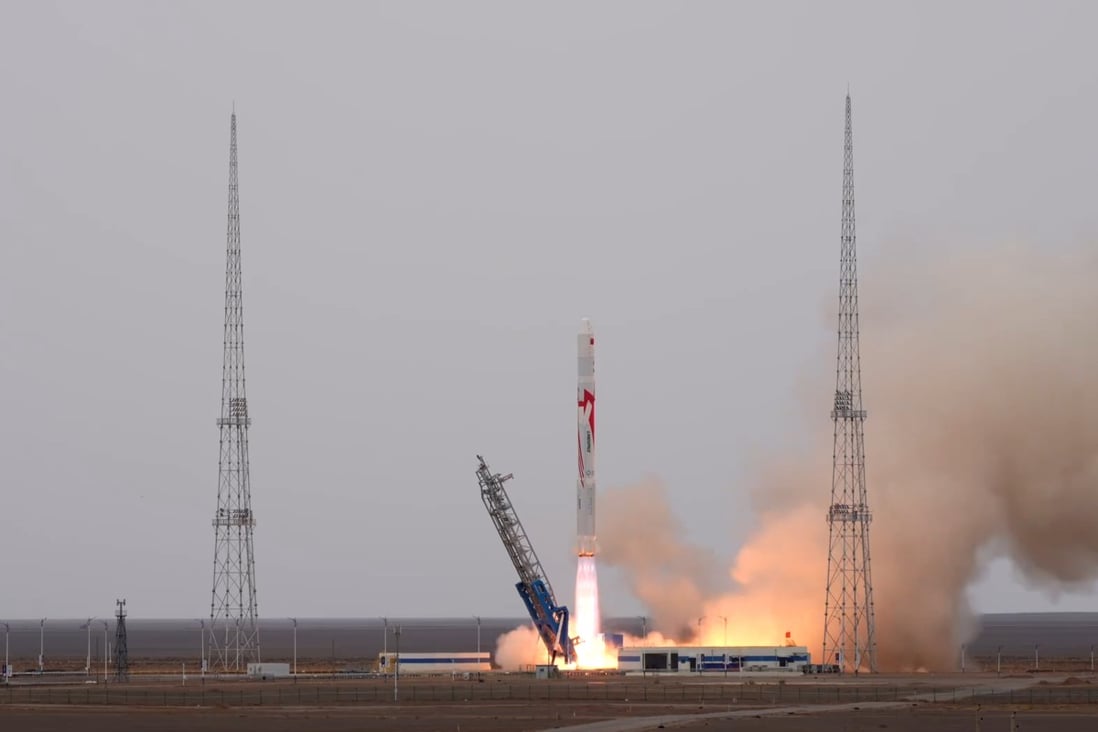China has claimed to outpace the US-based SpaceX by successfully launching the world’s first methane-liquid oxygen rocket into orbit on July 12.
A commercial Chinese firm, LandSpace, launched its Zhuque-2 rocket late Tuesday and made history as the first company to send a methane-fueled launcher into orbit.
According to state media reports, the Zhuque-2 carrier rocket, developed by LandSpace, took off from China’s Jiuquan Satellite Launch Center in northwest China at 9 a.m. and successfully completed its planned flight.
The launch of the Zhuque-2 rocket by LandSpace marked the second attempt by the Beijing-based company following an unsuccessful first launch in December.
Nonetheless, the rocket successfully deployed a test payload into a sun-synchronous orbit (SSO), becoming the world’s first to execute this remarkable feat.

Furthermore, this accomplishment propelled China ahead of its US competitors, including Elon Musk’s SpaceX and Jeff Bezos’ Blue Origin, in the race to develop carrier vehicles powered by methane.
Methane is considered a cleaner, safer, and more cost-effective propellant for reusable rockets, enhancing China’s position in the field.
Early this year, the Terran 1 rocket by Relativity Space in the US and SpaceX’s Starship experienced unsuccessful maiden launches in their endeavors to reach orbit using liquid oxygen methane propulsion.
LandSpace’s achievement also marks the second instance of a private Chinese company launching a liquid-propellant rocket, with Beijing Tianbing Technology successfully launching a kerosene-oxygen rocket in April.
This progress represents a significant step towards developing rockets that can be refueled and reused.
The Zhuque-2 is a two-stage liquid-propellant carrier rocket that features independently developed engines. The rocket measures 49.5 meters (162ft) in length and has a diameter of 3.35 meters (10.9ft). It has a payload capacity of six tons for low Earth orbit and four tons for sun-synchronous orbit (SSO).
According to the report, the rocket’s first stage is equipped with four Tianque-12 (TQ-12) engines using liquid oxygen methane, generating a thrust of 268 tons.
The second stage combines one Tianque-12 engine with one Tianque-11 (TQ-11) engine. The TQ-12 engine underwent testing starting in July 2019, and this recent launch follows four years of research and development by the company.
LandSpace has plans to upgrade the Zhuque-2 rocket by replacing the TQ-11 engine with the TQ-15A engine, a variable thrust pump-fed liquid oxygen methane engine with a thrust of 80 tons.
An improved version of the TQ-12 engine, the TQ-12A, is also developing.
These upgrades aim to enhance the payload capacity of the Zhuque-2 rocket while reducing costs, enabling it to meet a wider range of launch requirements and adapt to the evolving needs of the commercial space launch market in the future.
Rand Simberg, an analyst and consultant in space policy, technology, and business, shared with EurAsian Times that he doesn’t characterize the success of the Chinese company as a “victory over SpaceX.”
He believes that what truly matters is not being the first to accomplish something but being the best at it.
Simberg noted, “With the Raptor and BE-4 engines, SpaceX and Blue Origin remain at the forefront of that technology unless LandSpace has a full-flow staged-combustion engine in that class.”
Advantages Of Methane-Fueled Rockets
Since the Chinese government opened the sector to private investment in 2014, numerous commercial space firms in China have swiftly entered the industry, with LandSpace among the earliest and most well-funded entrants.
Methane-powered engines are highly suitable for the emerging trend of reusable rockets due to their exceptional performance and cost-effectiveness.
Considered the leading design in the modern era of rocketry, these engines offer a promising technology for advancing rocket capabilities.
During the initial phases of liquid rocket development, kerosene, and liquid hydrogen were frequently employed as fuel, as natural gas technology was in its nascent stage.
But in present times, the exceptional quality of natural gas derived from specific high-grade fields allows it to be liquefied and directly utilized as rocket engine fuel, eliminating the requirement for further purification processes.
Methane, with its slightly higher theoretical specific impulse, outperforms kerosene in propellant performance and requires less engine maintenance. Its high volatility also reduces post-recovery cleaning, prolonging the engine’s lifespan and enhancing environmental friendliness.

Fuel tank design improvements have also reduced weight and increased payload capacity in methane-fueled rockets.
However, Simberg pointed out that while methane is a good fuel and one of the cleanest after hydrogen, it is not the sole determining factor in rocketry.
As Elon Musk has emphasized, the key focus is achieving full and rapid reusability, regardless of the fuel being used.
Simberg highlighted Elon Musk’s interest in methane, saying he is “primarily interested in methane because it can be manufactured from the atmosphere on Mars, from CO2 and hydrogen via the Sabatier process.”
Methane’s possible availability on the surface of Mars or other celestial bodies in space, potentially through processes like mining water and carbon dioxide, known as in-situ resource utilization (ISRU), opens up the possibility of utilizing it as a fuel source in “space exploration and colonization efforts.”
This is crucial for private space companies like SpaceX, as it aligns with their goal of establishing regular trips to and from Mars using their spacecraft. This capability would enable them to achieve a higher level of self-sufficiency in terms of fuel supply for their missions.
- Contact the author at ashishmichel(at)gmail.com
- Follow EurAsian Times on Google News




